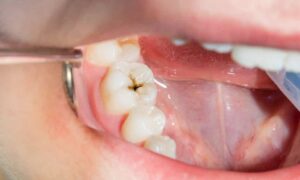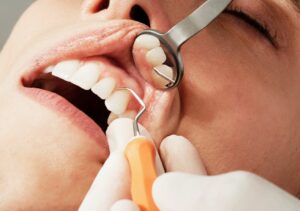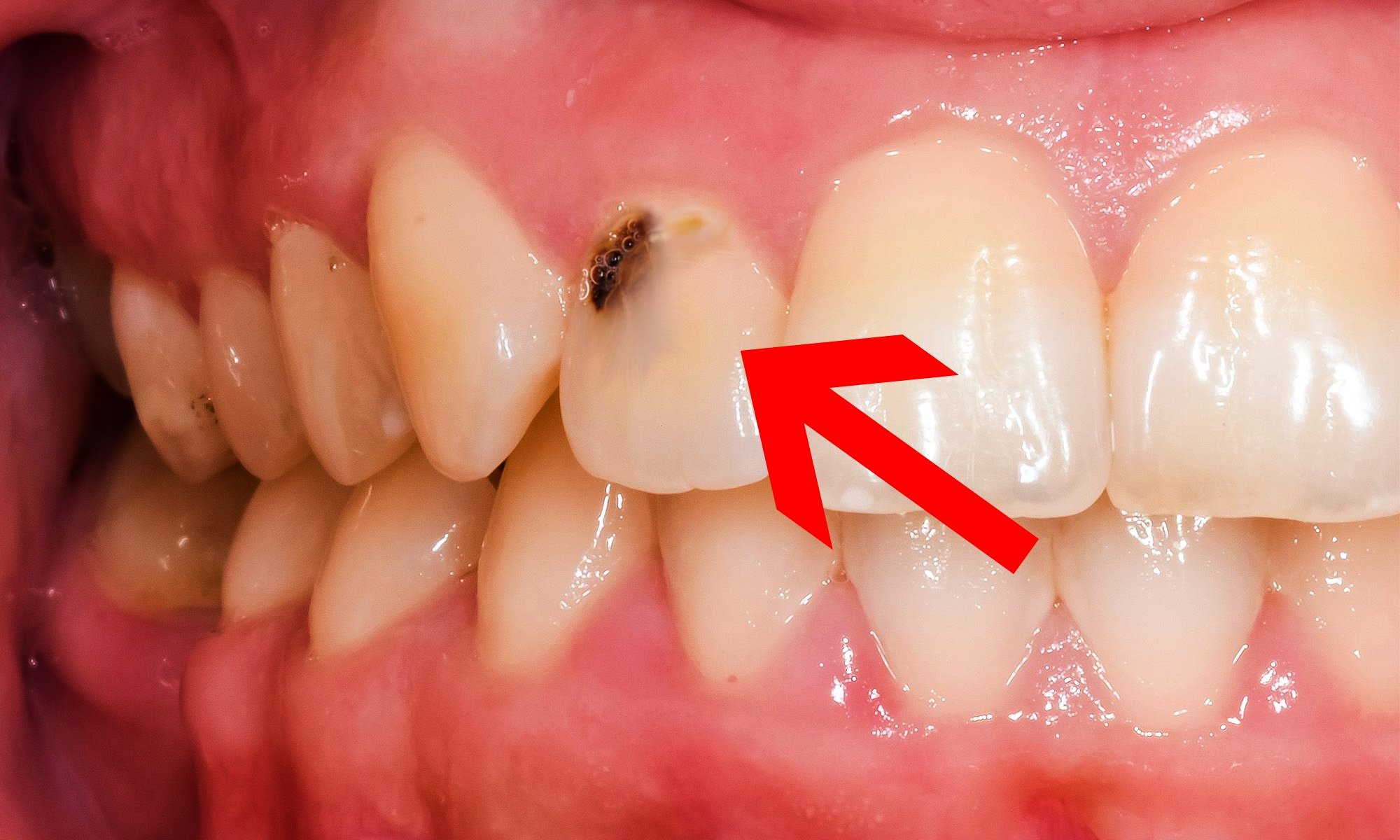Having a cavity in the front teeth can be a cause for concern and may affect your smile and overall dental health. In this article, we will explore the causes, symptoms, and treatment options for Cavity in front of teeth. Understanding how cavities form and how to prevent them can help you maintain a healthy and beautiful smile. Whether you already have a cavity or want to take preventive measures, this article will provide valuable information to take care of your dental health.
What are Cavities?
Cavities, also known as dental caries or tooth decay, are permanent damage to the hard surface of the teeth. They are caused by a combination of factors, including bacteria in the mouth, frequent consumption of sugary foods and drinks, poor oral hygiene, and a lack of fluoride.
When it comes to cavities in the front teeth, they can be particularly noticeable and affect the appearance of your smile. The front teeth are more visible when you talk, smile, or laugh, so having a cavity in this area can be a cause for concern.
Causes of Cavities in the Front Teeth
Poor Oral Hygiene
Cavities in the front teeth can be caused by a variety of factors. One common cause is poor oral hygiene. If you do not brush and floss your teeth regularly, plaque can build up on the surface of your teeth. Plaque is a sticky film that contains bacteria and can lead to tooth decay. When plaque is not removed, it can harden and turn into tartar, which is even more difficult to remove.
Diet
Another cause of cavities in the front teeth is a diet high in sugary foods and drinks. When you consume sugary substances, the bacteria in your mouth feed on the sugars and produce acids. These acids can attack the enamel of your teeth, leading to the formation of cavities.
Lack Of Fluoride
Furthermore, a lack of fluoride can also contribute to the development of cavities. Fluoride is a mineral that helps to strengthen the enamel of your teeth and protect them from decay. If you do not have access to fluoridated water or do not use fluoride toothpaste, you may be more prone to cavities.
Lifestyle Habits
Lastly, certain lifestyle habits can increase the risk of cavities in the front teeth. For example, smoking or using tobacco products can weaken the enamel and make your teeth more susceptible to decay. Additionally, dry mouth, which can be caused by medications or certain health conditions, can also increase the risk of cavities as saliva helps to wash away bacteria and neutralize acids in the mouth.
It is important to note that cavities in the front teeth can occur in individuals of all ages, including children and adults. Therefore, it is crucial to maintain good oral hygiene habits, follow a balanced diet, and visit your dentist regularly for check-ups and cleanings to prevent and detect cavities in the front teeth.
Symptoms of Cavity in front of teeth

Cavities in the front teeth can present with various symptoms, which can vary depending on the severity of the decay. Some common symptoms include:
- Tooth sensitivity: You may experience sensitivity to hot or cold foods and drinks. This sensitivity occurs when the decay has reached the deeper layers of the tooth, exposing the nerves.
- Toothache: As the cavity progresses, you may experience a persistent or intermittent toothache. This can be a dull ache or a sharp pain, especially when you bite or chew.
- Visible holes or pits: In some cases, you may be able to visually see the cavity as a small hole or pit on the surface of the front tooth. This is more common in advanced stages of decay.
- Discoloration or staining: Cavities can cause discoloration or staining on the affected tooth. You may notice white, brown, or black spots on the enamel.
- Rough or chipped edges: As the cavity progresses, it can cause the edges of the tooth to become rough or chipped. This can affect the appearance and texture of the tooth.
It is important to note that not all cavities in the front teeth cause noticeable symptoms, especially in the early stages. If you experience any of these symptoms. It is recommended to schedule an appointment with your dentist for a thorough examination and appropriate treatment.
How to treat cavities in front of teeth?
Cavities in the front teeth can be treated in a similar way to cavities in other teeth. The treatment options may include:
1. Dental fillings:
This is the most common treatment for cavities. The dentist will remove the decayed portion of the tooth and fill it with dental filling material, such as composite resin or amalgam.
2. Dental bonding:
If the cavity is small or on the front surface of the tooth, dental bonding may be an option. The dentist will apply a tooth-colored resin material to the affected area and shape it to match the natural tooth.
3. Dental crowns:
If the cavity is large or has caused significant damage to the tooth, a dental crown may be necessary. The dentist will remove the decayed portion of the tooth and cover it with a custom-made crown to restore its shape, strength, and appearance.
4. Root canal treatment:
If the cavity has reached the inner pulp of the tooth and caused an infection or inflammation, a root canal may be needed. This involves removing the infected pulp, cleaning the root canals, and sealing them to prevent further infection.
5. Tooth extraction:
In severe cases where the cavity has caused extensive damage and cannot be effectively treated, the tooth may need to be extracted. This is typically a last resort and the dentist will discuss options for replacing the missing tooth.
Prevention Tips for Cavities in the Front Teeth

Preventing cavities in the front teeth is just as important as preventing cavities in the back teeth. Here are some tips to help keep your front teeth cavity-free:
- Brush your teeth twice a day: Use fluoride toothpaste and brush your teeth for two minutes each time. Pay special attention to the front teeth, using gentle circular motions to ensure all surfaces are cleaned.
- Floss daily: Flossing helps remove plaque and food particles from between the teeth, including the front teeth. Be sure to floss gently to avoid damaging the gums.
- Limit sugary and acidic foods: Sugary and acidic foods can contribute to tooth decay. Limit your intake of candies, sodas, fruit juices, and other sugary or acidic foods and drinks.
- Drink water after eating: Drinking water after eating can help wash away food particles and neutralize acids in the mouth, reducing the risk of cavity formation.
- Avoid tobacco and alcohol: Tobacco and alcohol can have negative effects on oral health, including an increased risk of tooth decay. Avoid or limit their use for optimal oral health.
- Visit your dentist regularly: Regular dental check-ups and cleanings are important for maintaining good oral health. Your dentist can detect early signs of cavities and provide appropriate treatment.
- Consider dental sealants: Dental sealants are a protective coating applied to the chewing surfaces of the back teeth. They can also be applied to the front teeth to provide an extra layer of protection against cavities.
By following these prevention tips and practicing good oral hygiene, you can help keep your front teeth cavity-free and maintain a healthy smile. Remember, prevention is key when it comes to dental health, so take care of your teeth and visit your dentist regularly.
Related: emergency wisdom tooth removal
Conclusion
In conclusion, having a cavity in the front teeth can be a cause for concern both aesthetically and for your overall dental health. Understanding the causes, symptoms, and treatment options for cavities in the front teeth can help you take the necessary steps to prevent and address this dental issue. Remember to prioritize good oral hygiene practices and seek professional dental care to maintain a healthy and beautiful smile.



